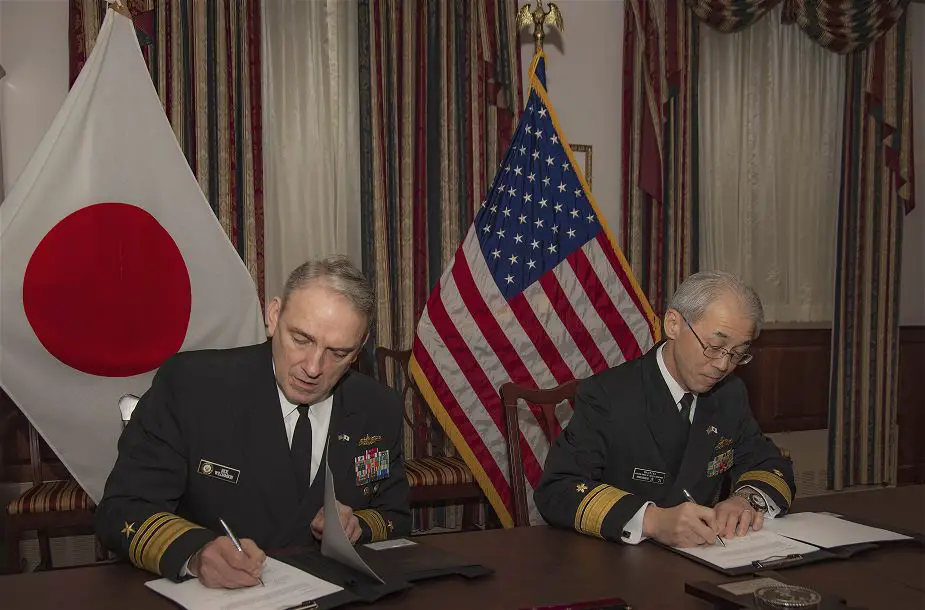Breaking news
U.S. Navy and Japan sign logistics interoperability framework.
Vice Adm. Rick Williamson, U.S. Navy deputy chief of naval operations for fleet readiness and logistics (N4), and Rear Adm. Masatomi Dairiki, director general of the Logistics Department of the Maritime Support Office, Japan Maritime Self Defense Force, signed a revised framework to improve cooperation and interoperability for maritime logistics February 5, 2020, at the Pentagon.
 Vice Adm. Rick Williamson, deputy chief of naval operations for fleet readiness and logistics, and Japan Maritime Self-Defense Force Rear Adm. Masatomi Dairiki, director general of logistics department, Maritime Support Office, sign an agreement to improve interoperability for maritime logistics between the U.S. (Picture source U.S. Navy )
Vice Adm. Rick Williamson, deputy chief of naval operations for fleet readiness and logistics, and Japan Maritime Self-Defense Force Rear Adm. Masatomi Dairiki, director general of logistics department, Maritime Support Office, sign an agreement to improve interoperability for maritime logistics between the U.S. (Picture source U.S. Navy )
The JMSDF/USN Logistics Interoperability and Integration Strategic Framework establish a bilateral, strategic approach to integrated logistics in support of shared areas of concern such as potential threats, humanitarian assistance/disaster relief, and other peacetime operations. The framework aims to create solutions for using limited resources as effectively as possible and reduce obstacles in meeting operational commanders’ requirements.
Efforts outlined in the framework underpin Chief of Naval Operations Adm. Mike Gilday’s fragmentary order 01/2019, imperative for building on alliances and logistics partnerships.
The framework facilitates collaboration across all levels of logistics planning, from tactical to operational, as well as innovative and strategic approaches for the future. Some initial target areas include exercises and wargames; fuel distribution, ordnance, and food stocks; acquisition agreements; and the possibility of additional personnel exchanges.
Staff will also explore opportunities to share logistics information, improve radiological screening procedures, and integrate emerging technologies such as additive manufacturing and unmanned systems that can enhance lethality and sustainability.
Following the signing event and the exchange of commemorative plaques, the two leaders discussed additional topics relevant to the five maritime logistics sustainment vectors (rearm, resupply, repair, revive, and refuel), ranging from Landing Craft Air Cushion (LCAC) operations to maintenance of U.S. Navy vessels in Japanese shipyards, to future replenishment at sea operations between the two nations.
OPNAV N4 continues to seek partnerships and develop doctrine and policy to enable an effective logistics enterprise that achieves the best possible outcomes for the warfighter.

























